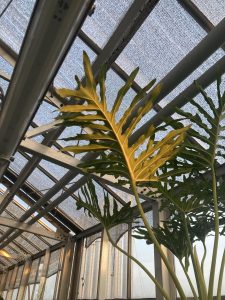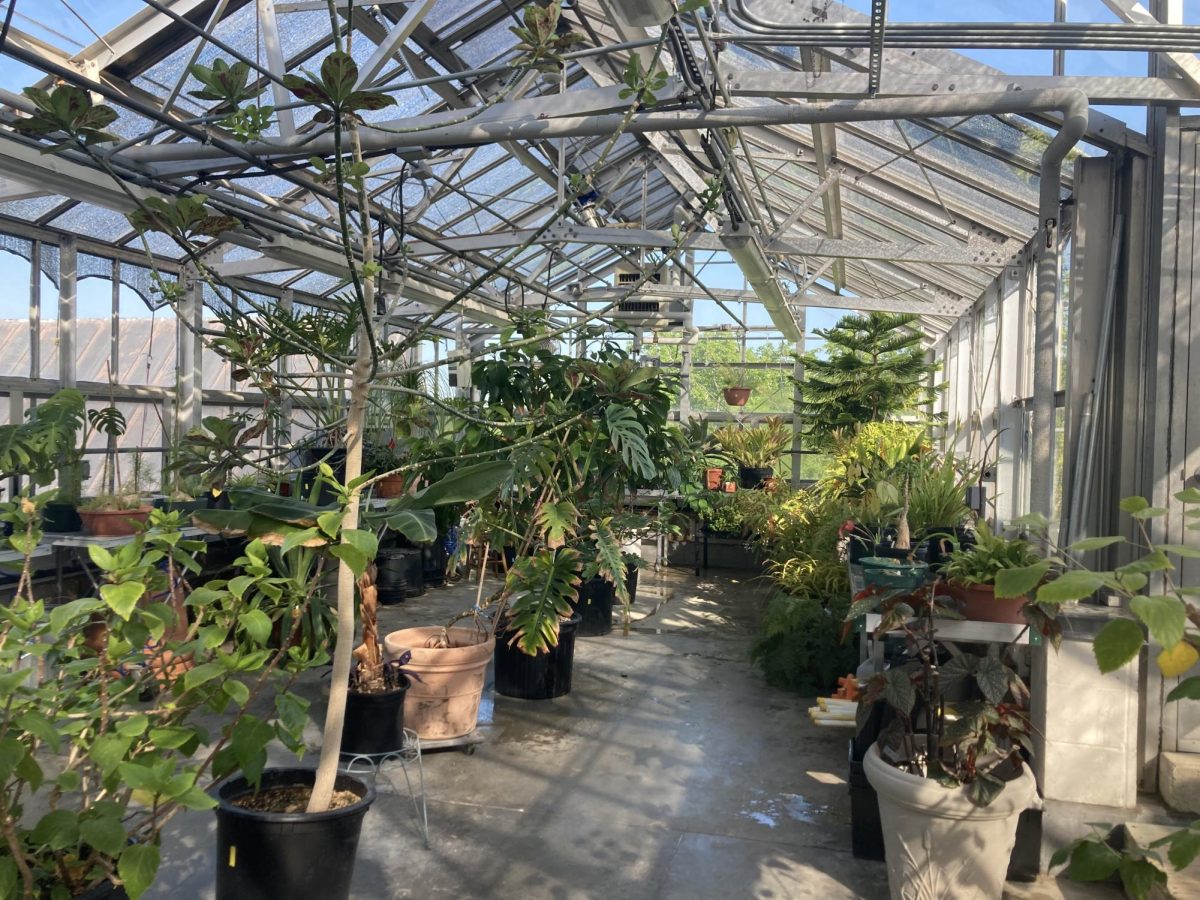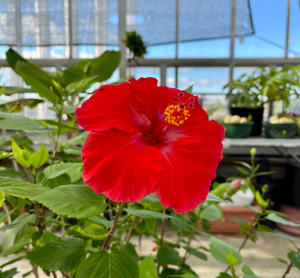Nestled on the sixth floor of Carnegie Science Hall rests the greenhouse. Through the door is a humid sanctuary, bursting with every shade of green. The glass room is filled with an “earthy” smell – that’s the only word I can think to use – and it is brimming with succulents, avocado trees, ferns, sago palms and jades.
My work shifts are simple, I water the plants, prune the dead leaves, sweep up the infinite dirt off the floor and try to vanquish some of the bug infestations.

We have a book, well it’s a binder, but really it’s more of a bible containing all the plant species we’ve ever had in the greenhouse and how to care for them. It’s a dense text and I don’t claim to even know half of the information in there. What I do know is how much the plants have been watered and whether their leaves are drooping more this week than last.
If you ever have the chance to work in a greenhouse, or a garden for that matter, start during the summer. I did, and it was rewarding if not also stressful work. Every morning I would wake up before my full time summer job and walk over to the greenhouse. As I listened to some music I would check in on my sprouting plants. Afterwards, I would go down to my boss’s office to ask whether I was killing the ferns (I was) and pet his adorable dog.
I was curious about the history of the greenhouse, so I checked out the Edmund S. Muskie Archives. It looks like there have been at least two, maybe even three greenhouses in Bates’ history. The first, or maybe second, was built in 1974. An article by The Student titled “No Stones Please” implores students to “refrain from throwing snowballs, rocks and other glass-breaking missiles when near the greenhouse.”
Perhaps this is why the greenhouse is now on top of Carnegie?

Back then, it was only accessible to Biology students, however, being on the ground made it far more visible. The greenhouse today is only accessible by key card to select students, faculty and staff. However, this past year, two courses hosted class sessions in the greenhouse, “Dendrology and the Natural History of Trees” and “Life of the Forest,” both taught by Professor of Biology Brett Huggett.
According to Mark Lessard, science resource technician and greenhouse manager, in the past several groups have used the space including the Tea Club and Yoga Club.
“It’s a beautiful place in the winter when everything is dead and dying outside,” he said. Lessard says he’s open to clubs or individual students using the space if they email him to ask.
Below, Eva McDonough (fellow greenhouse caretaker) and I provide a small tour of the personalities and peculiarities of the plants in the greenhouse.
Most Prone to Resurrection:
- Polka Dot Begonia – They look like actual sticks right now.
- Beefsteak Begonia – Another begonia, another problem. I can’t count the number of times this has died and come back to life.
- Elephant Ear – The outside observer may think that the pots containing these plants are just dirt.
- Mint – There is no rhyme or reason to why the mint suddenly turns into a dirt patch…
Interesting Names:

- Beefsteak Begonia
- Happy Bean Plant
- African Milk Bush
- Pregnant Onion
Big Personalities:
- Drama Queen – Night Blooming Cereus – Blooms once a year for only a couple hours in the dead of night.
- Primadonna – African Milk Bush – Literally toxic, topples over every once in a while, trying to grow out of the greenhouse.
- Show Off – Urn Plant – Somehow has had the biggest bright pink flower bloomed for the last five months.
- Attention Seeker – Oxalis – Uses propulsion for seed dispersal, so if you disturb the seed pods, the seeds will spray all over you.
- Timeless and priceless – Cycad – Prehistoric plant that existed alongside dinosaurs. Some people get them stolen because they’re so rare.
Tastes and Smells:
- Chiltepin Pepper – Quarter million scoville units for the tiniest pepper
- Curry Leaf Plant – Smells spicy
- Cardamom – Warm cup of chai vibes
- Mint – Heard of it?
Best Party Trick:
- The Shamrock Plant – Phototropism results in the opening of leaves when the sun is out and the folding of leaves when there isn’t sunlight.
Golden Children:
- Hibiscus
- Tree Philodendron – Always sunbathing










